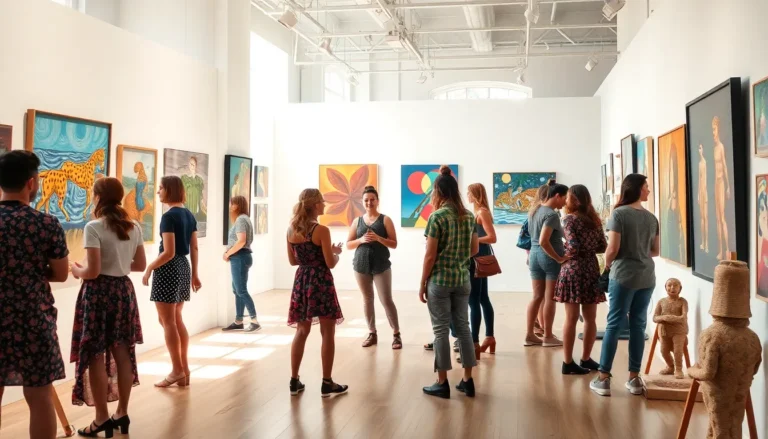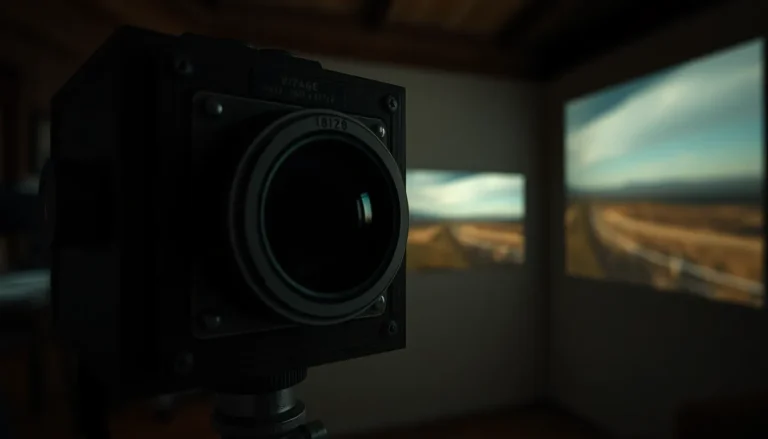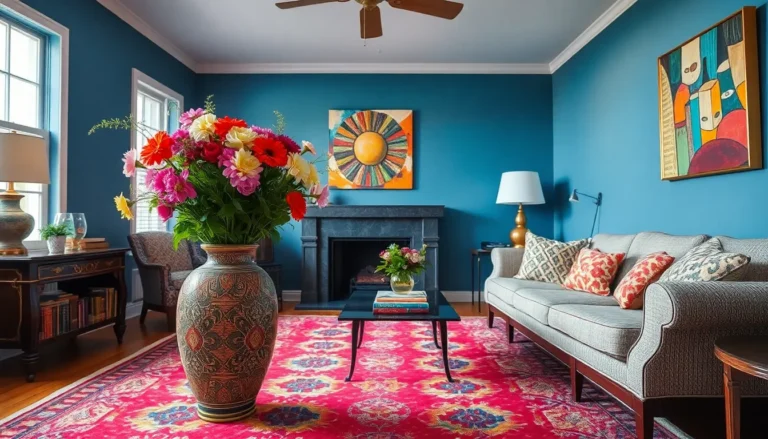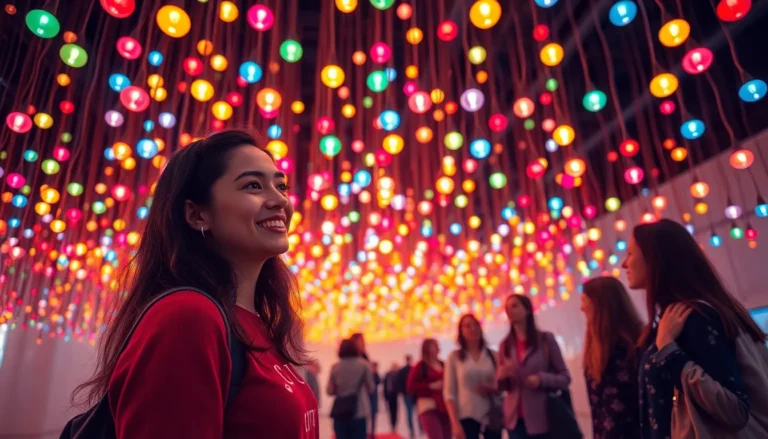Table of Contents
ToggleIn a world where selfies reign supreme, spirit photography takes the art of capturing moments to a whole new level. Imagine snapping a picture only to discover a ghostly figure lurking in the background. While some might call it a photographic mishap, others see it as a glimpse into the supernatural. This quirky blend of art and the afterlife has fascinated both skeptics and believers alike, sparking debates that could make even the most stoic of spirits chuckle.
Overview of Spirit Photography
Spirit photography captures images that seemingly include ghostly figures or supernatural entities. This genre emerged in the mid-19th century, gaining significant popularity with early photographers, such as William H. Mumler. Evidence of the unexplained drew attention, causing individuals to question what they believed about life and death.
Ghostly apparitions often appear in photographs, creating intrigue for enthusiasts and skeptics alike. The technique often involves double exposure, a method that allows photographers to overlay images. Despite this, many claim that true spirit photography reveals an authentic connection with the afterlife.
Interest in spirit photography has persisted, influencing contemporary art and culture. Modern technology enables artists and photographers to experiment with new methods, pushing boundaries of traditional photography. Digital techniques enhance the visual representation of spirits, making the phenomenon more accessible to a wider audience.
Psychics and mediums sometimes use spirit photography as evidence of their abilities. They argue that these images capture souls of the deceased, bridging the gap between two realms. Conversations surrounding the topic often reveal diverse perspectives: some view spirit photography as fascinating art, while others remain skeptical.
Today, exhibitions and workshops continue to explore the intersection of technology and the supernatural. These gatherings provide platforms for discussion and experimentation with spirit photography. Artistic interpretations reflect varying beliefs, showcasing the complexity of human emotion tied to the idea of life after death.
The History of Spirit Photography

Spirit photography began capturing public intrigue in the mid-19th century. This genre became a fascinating intersection of art and the supernatural.
Early Beginnings
The origins of spirit photography date back to the 1860s. At this time, spiritualism gained popularity, promoting beliefs in communication with the deceased. Early photographers utilized techniques like double exposure, creating images that seemed to feature ghostly figures. This blending of artistry and belief captivated audiences. Inventors such as Fox Talbot and Joseph Nicéphore Niépce laid the groundwork for photography, enabling later experimentation. Results often sparked intense debates surrounding the authenticity of the images presented. Many labeled these findings as mere tricks while others embraced them as genuine connections to the afterlife.
Notable Figures in Spirit Photography
William H. Mumler stands out among early spirit photographers. His work gained significant attention in the 1860s, particularly an image that appeared to show a deceased relative beside a living sitter. Others like Sir Arthur Conan Doyle endorsed this genre, lending credibility during that era. Figures such as Christina Olson and Andrew W. P. Ellis contributed to evolving techniques as well. As discourse around spirit photography flourished, these photographers shaped public perceptions about capturing the ethereal. Their legacy continues to influence contemporary artists who explore themes of spirituality through photography.
Techniques Used in Spirit Photography
Spirit photography employs various techniques to capture the essence of the supernatural, blending tradition with innovation.
Traditional Methods
Early spirit photographers relied heavily on traditional methods. Double exposure emerged as a popular technique where two images overlayed to present ghostly forms alongside living subjects. This technique created an ethereal quality, igniting intrigue and skepticism among viewers. Some photographers utilized long exposure times, allowing more light to collect and creating ghostly silhouettes that seemed to float in space. William H. Mumler’s work prominently featured these techniques, establishing a foundation for spirit photography. Many considered these methods deceptive, yet they sparked interest during the rise of spiritualism in the late 19th century, drawing both support and criticism.
Modern Technology
Contemporary spirit photography embraces modern technology, expanding on traditional techniques. Digital cameras allow for precise manipulation of images, including software tools that can enhance or alter photographs to highlight spectral elements. Some artists experiment with infrared photography, capturing unseen wavelengths and creating unique representations of spirits. Additionally, virtual reality and augmented reality contribute new dimensions, allowing viewers to engage with the supernatural in immersive ways. This innovative approach enables artists to explore themes of existence and the afterlife, making spirit photography relevant in today’s digital landscape.
The Impact of Spirit Photography on Society
Spirit photography has profoundly shaped societal views on the supernatural. Interest in this genre has spurred a wide range of cultural reactions, from fascination to skepticism.
Cultural Reactions
Many cultures embrace the idea of connecting with the afterlife, prompting enthusiasm in spirit photography. Some individuals find comfort in images depicting deceased loved ones, sparking hope and connection. Conversely, skeptics question the authenticity of these images, often attributing them to tricks or manipulations. Such debates enrich public discourse, driving conversations about belief systems and the unknown. Communities host discussions, workshops, and exhibitions that encourage exploration of these themes within various cultural frameworks.
Influence on the Art World
The art world significantly influences and is influenced by spirit photography. Artists draw inspiration from these eerie images, incorporating supernatural elements into modern artwork. Some use spirit photography as a medium to challenge perceptions of reality, blending technology and traditional techniques. Galleries often feature pieces that provoke thought regarding life and death, creating immersive experiences for viewers. Various movements embrace these themes, with contemporary artists pushing boundaries and exploring existential questions. Through exhibitions and collaborations, spirit photography continues to ignite creativity and innovative expressions in the art community.
Criticism and Skepticism
Criticism of spirit photography highlights skepticism about claims of capturing supernatural phenomena. Many individuals argue that images purportedly depicting spirits often arise from simple photographic techniques rather than true spiritual encounters.
Debunking Spirit Photography
Various techniques, like double exposure or chance light effects, often explain ghostly appearances in photographs. Critics emphasize that many famous spirit photographs can be reproduced using these traditional methods. Several notable instances of alleged spirit photographs, such as those by William H. Mumler, exhibit clear indicators of manipulation, further enhancing doubts about their authenticity. Disbelievers assert that the curious nature of these images captivates attention yet fails to provide conclusive evidence of the supernatural.
The Role of Science
Science plays a vital part in understanding the phenomenon of spirit photography. Researchers utilize methods like optical illusion analysis and psychological evaluations to determine the authenticity of spirit-related claims. Scientific scrutiny often reveals that subjects may interpret ordinary images as supernatural due to cognitive biases or emotional states. Psychologists assert that belief in spirit photography may stem from human tendencies to seek patterns in chaos, leading many to perceive connections that do not exist. By applying rigorous scientific standards, skepticism towards spirit photography continues to grow within both academic and public circles.
Spirit photography remains a captivating blend of art and the supernatural. Its rich history and evolving techniques continue to spark curiosity and debate among enthusiasts and skeptics alike. As modern technology enhances the visual representation of spirits, artists are finding new ways to engage audiences with themes of existence and the afterlife.
The diverse reactions to spirit photography reflect broader societal views on mortality and connection. Whether seen as a genuine glimpse into the beyond or a mere trick of light, this genre invites ongoing exploration and dialogue. Ultimately, spirit photography challenges perceptions of reality, encouraging individuals to ponder the mysteries that lie beyond the visible world.







